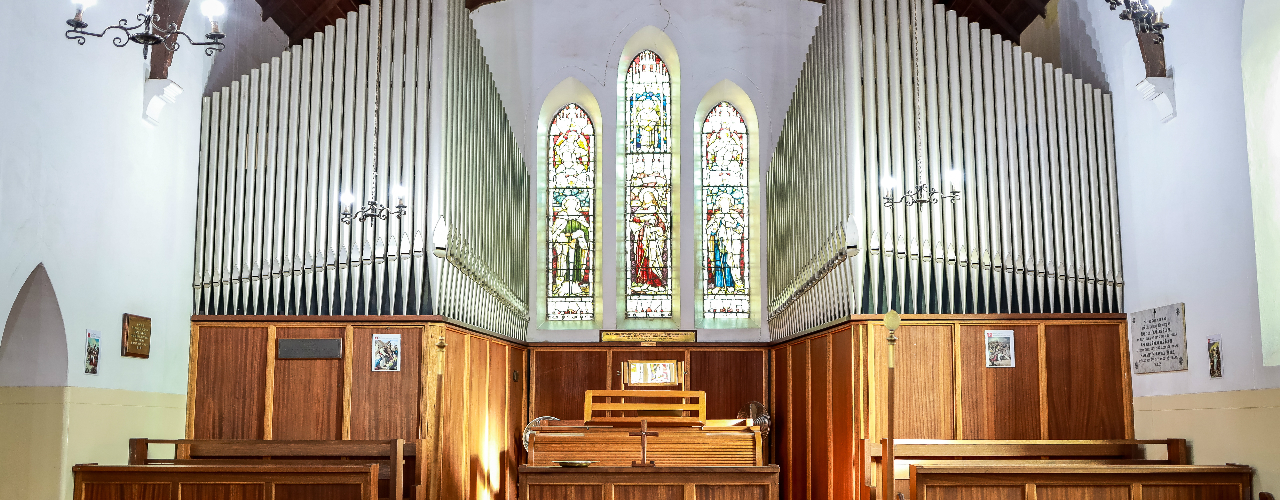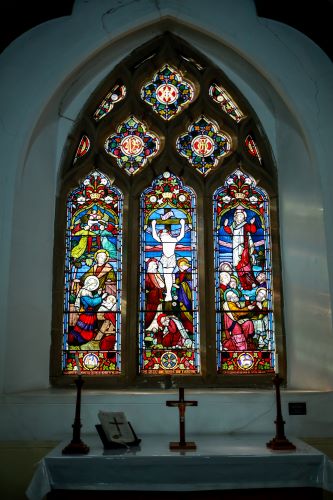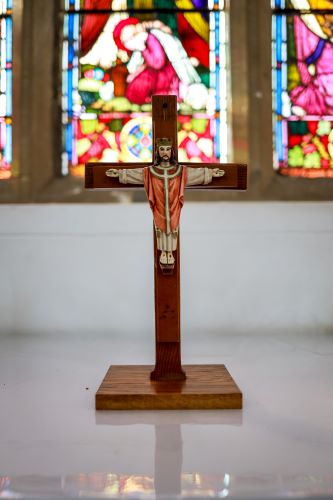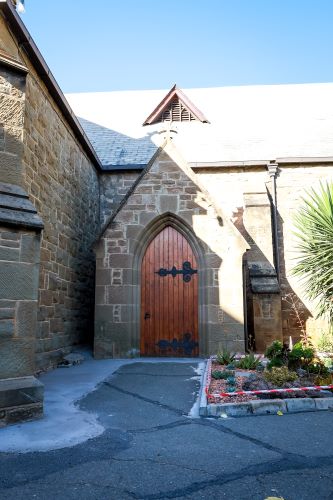St Jude’s Anglican Church
Oudtshoorn – Diocese of George

History of St Jude’s
History of St Jude’s:
St Jude’s Church this year will be celebrating her 161st birthday. The church has such a wonderful history and is known as the first sand-stone church building in Oudtshoorn. In the year 1849 Bishop Robert Gray, the first Archbishop of Cape Town, voyaged through what is now known as the Great and Klein Karoo in South Africa, and many years after in 1855, visited the area again to consecrate churches in Belvedere, Schoonberg and Beaufort West. Anglicans in the Oudtshoorn area during this time were ministered to by Archdeacon Welby and later by Reverend Glover who would travel from Schoonberg/Wilderness, 78 kilometers away.
In 1859 when Reverend Glover was replaced by Reverend Herman Hirsch a converted Jew, the Anglican people asked to have their own church building and by Bishop Gray’s offer of the area, Reverend Hirsch agreed to start the building by acquiring a building site. Reverend Hirsh paid for the property himself and in the same year, asked for the assistance of Scotch Stonemasons, originally hired to start building the Dutch church. The foundation stone was laid in 1860, no longer recognizable and in the same year, Reverend Alfred Morris soon replaced Reverend Hirsch when the walls of the church building had risen to the height of one meter. Under his direction St Jude’s church was completed and consecrated on the 26thof September 1863, the same day he was instituted as her first Rector.
Reverend Alfred Morris had ridden on horseback to the local farmers for donations, educated children in the area to supplement his small stipend and in a letter written in October 1901 on his sick bed, wrote that “Had it not been for the help received by two boarders, we should have been almost reduced to dry bread.” Reverend Morris served St Jude’s church from 1860-1902.
Reverend Alfred Morris’s legacy continued to live through his daughter, Florence Morris. She would play the harmonium in church and started playing the organ at the age of 12, playing the pipe organ for 73 years. The organ is of Rusworth and Liverpool and was 190 pounds, installed in 1883. It may be the oldest organ in South Africa. As of 3rd of May 2024, the organ is 211 years old.
The Church warden Mr.Catrill/Cathal (different accounts of surname, presumed to be of Scottish descent) at the time of the building of the St Jude’s, is said to have sold his watch for 10pounds to pay the four Stone-masons from Scotland.
The church hall was completed in 1905 and named after Queen Victoria of England. Interesting facts is that the church rectory burned down in 1933 and was rebuilt to the same plan but this time not with thatched but slate tile.
Sadly, The Reverend Kenneth McLaren Wiley, recorded as part of St Jude’s history on 17th April 2024, drowned together with his son Paul in Graff Reneitte after his tenure at St Jude’s Parish in 1959.
St Jude’s has had 14 rectors during her life and would always remember that Reverend Basil Berthold was part of the British Army and fought in the Second World War. It was said that Reverend Berthold was part of the royal air force.
Chapelries of St Jude’s
Chapelries of St Jude’s in previous years included St Simon’s Bridgeton, also the Old St Simon’s church called the “Koppie kerk”. Reverend Hillyard played an important role in the life of St Simon’s 1885. He wrote to his brother in England to tell of his difficulties and was surprised to receive 200 pounds as thank offering. St John’s Bongolethu, used to be a mud construction church that was consecrated by Bishop Gwyer on the 1st April 1951. St Mark’s Calitzdorp was also part of the parish; sadly the church has since been deconsecrated.
St John’s Prince Albert and Good Shepherd Klaarstroom, first named St Luke’s, remain chapelries of St Jude’s Parish.
More Information and Restoration
More information can be found in the archives of the Diocese of George and St Judes Parish regarding this historic church.



